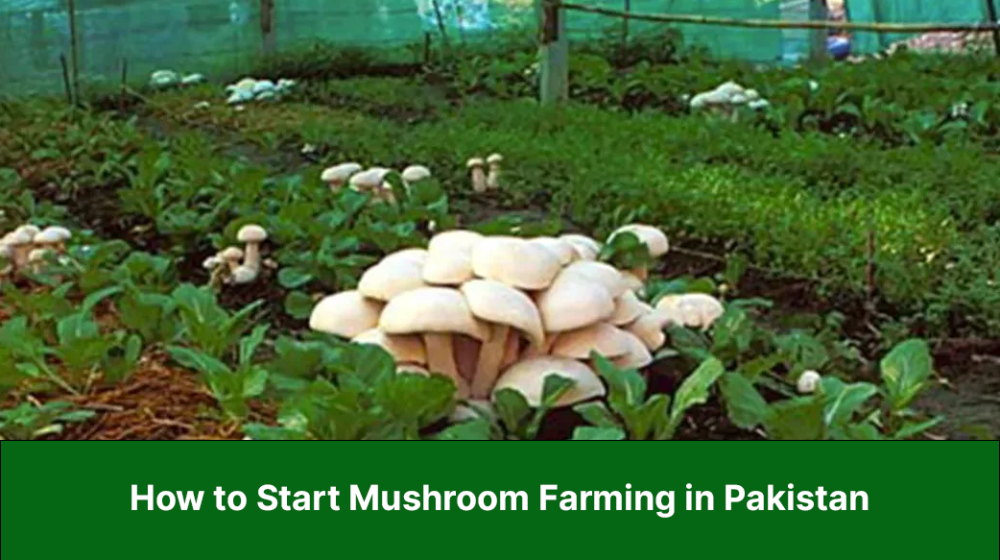Mushroom farming is an emerging and profitable agricultural venture in Pakistan. With a growing demand for mushrooms due to their nutritional value and culinary versatility, starting a mushroom farming business can be a lucrative opportunity. This article will guide you through the essential steps and considerations involved in starting a successful mushroom farming business in Pakistan.
Understanding the Mushroom Farming Industry in Pakistan
Before venturing into mushroom farming, it’s important to understand the market demand and potential in Pakistan. Mushrooms are widely consumed and have a significant market presence, both domestically and internationally. They are used in various culinary dishes, pharmaceuticals, and dietary supplements, making them highly sought after.
There are several types of mushrooms suitable for farming in Pakistan, including oyster mushrooms, button mushrooms, and shiitake mushrooms. Each type has its unique cultivation requirements and market preferences. Research the local market demand and assess the feasibility of growing specific mushroom varieties based on consumer preferences and profitability.
Planning Your Mushroom Farming Business
To ensure a successful mushroom farming business, it’s essential to start with a well-thought-out plan. Set clear goals and objectives for your business, such as the quantity of mushrooms you aim to produce, target markets, and revenue projections. Conduct thorough market research to understand the demand, competition, and pricing in your chosen market.
Creating a comprehensive business plan will serve as a roadmap for your mushroom farming journey. It should include details about your production techniques, marketing strategies, financial projections, and risk management strategies. Consider the costs involved in infrastructure setup, equipment, raw materials, and marketing efforts.
Selecting the Right Location and Infrastructure
Choosing a suitable location for mushroom cultivation is essential for the success of your mushroom farming business. Look for a location that provides a favorable climate, access to clean water, and proximity to your target market. Mushrooms thrive in controlled environments with specific temperature and humidity conditions.
Constructing a dedicated mushroom growing facility is crucial. You can opt for various setups, including a greenhouse, a shade net structure, or a customized indoor facility. Ensure that the facility allows for proper ventilation, temperature control, and protection from pests and diseases. Implement a reliable source of water and electricity to meet the requirements of your cultivation process.
Procuring Mushroom Spawn and Substrate
Mushroom spawn serves as the “seeds” for mushroom cultivation. Select a reputable supplier or producer to procure high-quality mushroom spawn. Consider the specific mushroom variety you intend to cultivate and ensure that the spawn is suitable for your chosen species.
In addition to spawn, you’ll need a suitable substrate material for mushroom cultivation. Common substrate materials include agricultural waste such as wheat straw, sawdust, or a combination of various organic materials. The substrate provides the necessary nutrients for the mushrooms to grow. Proper preparation and sterilization of the substrate are essential to create a favorable environment for mushroom cultivation.
Mushroom Cultivation Techniques
Spawning and inoculation are the initial steps in mushroom cultivation. The spawn is mixed with the prepared substrate material, and the mixture is placed in containers or growing bags. Proper sterilization techniques should be followed to prevent contamination.
Maintaining optimal temperature and humidity levels is crucial for successful mushroom cultivation. Different mushroom species have specific temperature and humidity requirements, so it’s essential to research and provide the appropriate conditions. Regular monitoring and adjustment of these factors are necessary throughout the cultivation process.
Pests and diseases can pose a significant risk to mushroom crops. Implement proper hygiene practices, such as sanitizing equipment and maintaining a clean growing environment, to minimize the risk of contamination. Monitor for common pests and diseases, and take prompt action if any issues arise. Consult with experts or experienced mushroom farmers to learn effective pest and disease management strategies.
Harvesting and Post-Harvest Handling
Mushrooms are harvested at different stages of growth, depending on the variety and market demand. Proper harvesting techniques should be followed to ensure the quality and shelf life of the mushrooms. Harvesting too early or too late can impact their taste, texture, and overall market value.
After harvesting, mushrooms should be handled with care to maintain their freshness. Remove any debris or excess moisture and package them in suitable containers or packaging materials. Consider using breathable packaging to extend the shelf life and prevent moisture buildup, which can lead to spoilage.
Marketing and Selling Mushrooms
Identifying your target market and customers is crucial for developing an effective marketing strategy. Determine whether you will focus on selling directly to consumers, restaurants, or wholesalers. Explore potential partnerships with local grocery stores, farmers’ markets, restaurants, and online platforms to reach your target market effectively.
Develop a strong brand presence by highlighting the quality and uniqueness of your mushrooms. Consider creating a visually appealing brand identity and packaging that distinguishes your products in the market. Emphasize the nutritional value and culinary versatility of mushrooms to attract potential buyers.
Utilize various marketing channels, including social media, websites, and local advertisements, to promote your mushrooms. Engage with your target audience, share recipes and cooking tips, and highlight the health benefits of consuming mushrooms. Participate in relevant events and food festivals to showcase your products and network with potential customers.
Financial Management and Sustainability
Estimating the costs involved in mushroom farming is crucial for financial planning and sustainability. Consider expenses such as infrastructure setup, equipment, raw materials, labor, marketing, and administrative costs. Develop a pricing strategy that allows for profitability while remaining competitive in the market.
Managing expenses and optimizing resources is essential to ensure the long-term.
